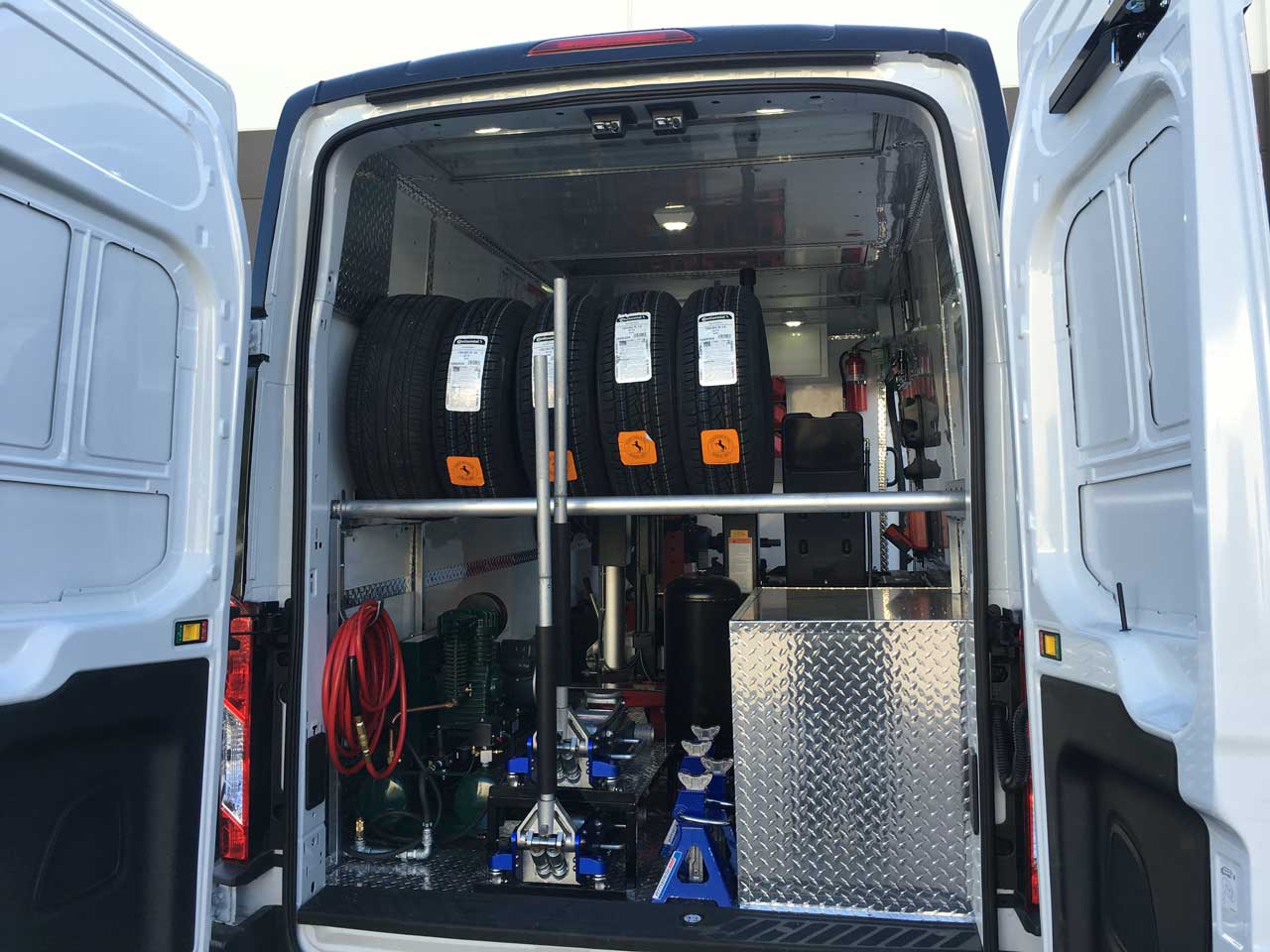Expert Mobile Tire Repair in Las Vegas - Rapid Service Guaranteed
Expert Mobile Tire Repair in Las Vegas - Rapid Service Guaranteed
Blog Article
Tire Solution: Proven Methods for Optimum Tire Upkeep and Care
Keeping optimum tire problem is paramount for both safety and security and efficiency of any car. From ensuring correct tire stress to regular turning and positioning, there are proven techniques that can significantly prolong the life expectancy of your tires and improve general driving experience. As we explore the ins and outs of tire treatment and maintenance, we will certainly uncover necessary standards that every vehicle proprietor must stick to for the finest possible results. Let's explore the world of tire solution and uncover the secrets to keeping your tires in top-notch form for the long haul.
Importance of Tire Pressure
Sufficient tire stress advertises much better fuel effectiveness, as under-inflated tires can lead to boosted rolling resistance, causing the engine to function more challenging and take in even more gas. Proper tire stress makes certain even step wear, boosting tire long life and conserving cash in the long run by postponing the need for early substitutes. Routinely examining and readjusting tire stress, especially before long journeys, is a simple yet effective method to boost automobile efficiency, extend tire life-span, and focus on safety and security on the road.
Tire Turning Guidelines
When thinking about tire rotation standards, it is vital to comprehend the relevance of this maintenance task in making the most of tire life expectancy and preserving optimal car efficiency. Tire rotation involves altering the placement of each tire on a car to guarantee even walk wear. Front tires often tend to use much more rapidly than rear tires as a result of steering pressures, making normal rotation critical for balanced wear patterns. The recommended rotation pattern differs depending upon whether a car is front-wheel, rear-wheel, all-wheel, or 4x4. Commonly, tires should be turned every 5,000 to 7,500 miles, or as recommended in the car handbook. Overlooking tire turning can bring about uneven wear, influencing handling, traction, and possibly compromising automobile safety. By sticking to proper turning standards, vehicle drivers can extend the life of their tires, boost gas effectiveness, and boost total driving experience. Regular rotation is an easy yet reliable upkeep practice that adds significantly to tire long life and vehicle performance.

Benefits of Wheel Placement
Making sure appropriate wheel placement after tire turning is essential for maintaining well balanced wear patterns and optimizing automobile performance. Wheel positioning describes the change of the angles of the wheels to the manufacturer's specifications. One of the key benefits of wheel alignment is improved managing and steering reaction. When the wheels are correctly straightened, it lowers guiding effort, guaranteeing a smoother and a lot more controlled driving experience. Furthermore, proper wheel positioning helps to prolong the life expectancy of your tires. Misaligned wheels can cause uneven tire wear, resulting in premature tire substitute and enhanced upkeep costs.

Tire Footstep Deepness Check
Executing a routine inspection of tire step deepness is view website necessary for keeping risk-free driving problems and lengthening the life expectancy of your tires. Unequal walk wear can indicate problems with tire suspension, pressure, or positioning, highlighting the importance of normal walk deepness checks. By incorporating tire tread depth checks right into your regular maintenance routine, you can drive with confidence recognizing that your tires are in leading condition.
Seasonal Tire Inspection
Seasonal tire examination is a fundamental aspect of tire maintenance that guarantees tires are all set to encounter the obstacles postured by various climate problems. In prep work for winter season, it is vital to inspect the tire pressure routinely as cold temperature levels can create tire pressure to drop. By performing regular seasonal tire evaluations, drivers can lengthen tire life-span, improve fuel performance, and most significantly, ensure a secure driving experience in differing weather condition conditions.
Verdict
In final thought, keeping appropriate tire pressure, revolving tires on a regular basis, aligning wheels appropriately, monitoring walk depth, and performing seasonal evaluations are important techniques for ideal tire treatment. By complying with these confirmed techniques, drivers can guarantee their tires last much longer, carry out far better, and contribute to total car safety and security. It is crucial to prioritize tire maintenance to avoid mishaps, boost fuel performance, and prolong the life expectancy of tires.
Adequate tire pressure advertises far better fuel effectiveness, as under-inflated tires can lead to raised rolling resistance, causing the engine to work tougher and consume more fuel.When thinking about tire turning standards, it is important to comprehend the relevance of this upkeep task in why not try these out making best use of tire lifespan and maintaining optimal car efficiency. Seasonal tire assessment is a basic facet of tire upkeep that ensures tires are ready to face the difficulties presented by various climate problems. By performing regular seasonal tire examinations, drivers can prolong tire lifespan, enhance gas performance, and most notably, make certain a safe and secure driving experience in differing climate problems.
In final thought, preserving appropriate tire pressure, rotating tires routinely, aligning wheels correctly, monitoring step deepness, and carrying out seasonal assessments are vital practices for optimal tire treatment.
Report this page